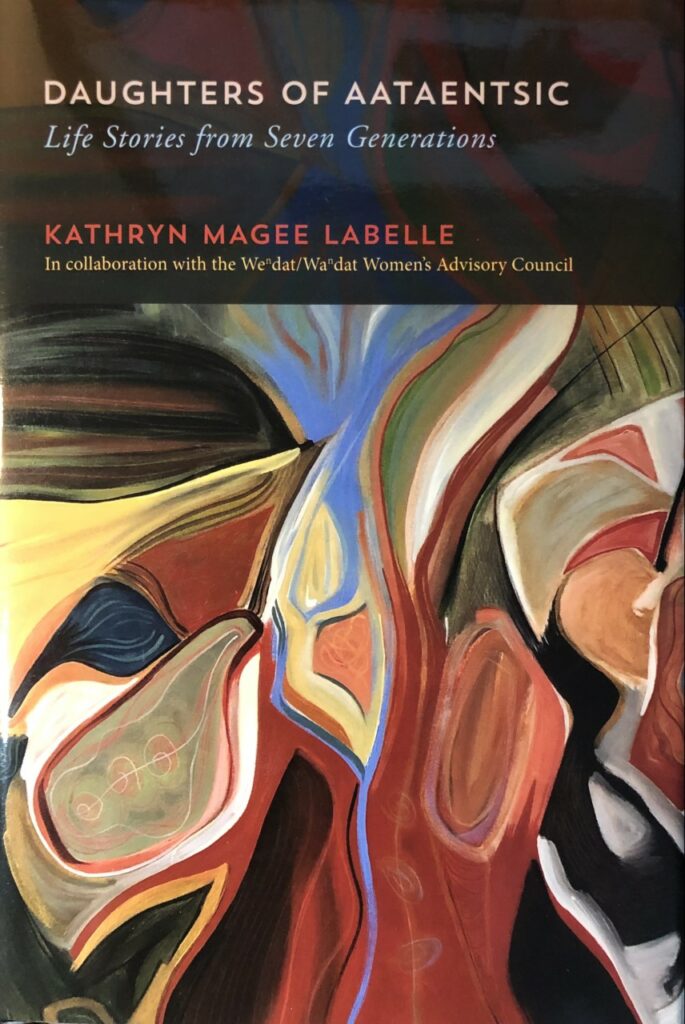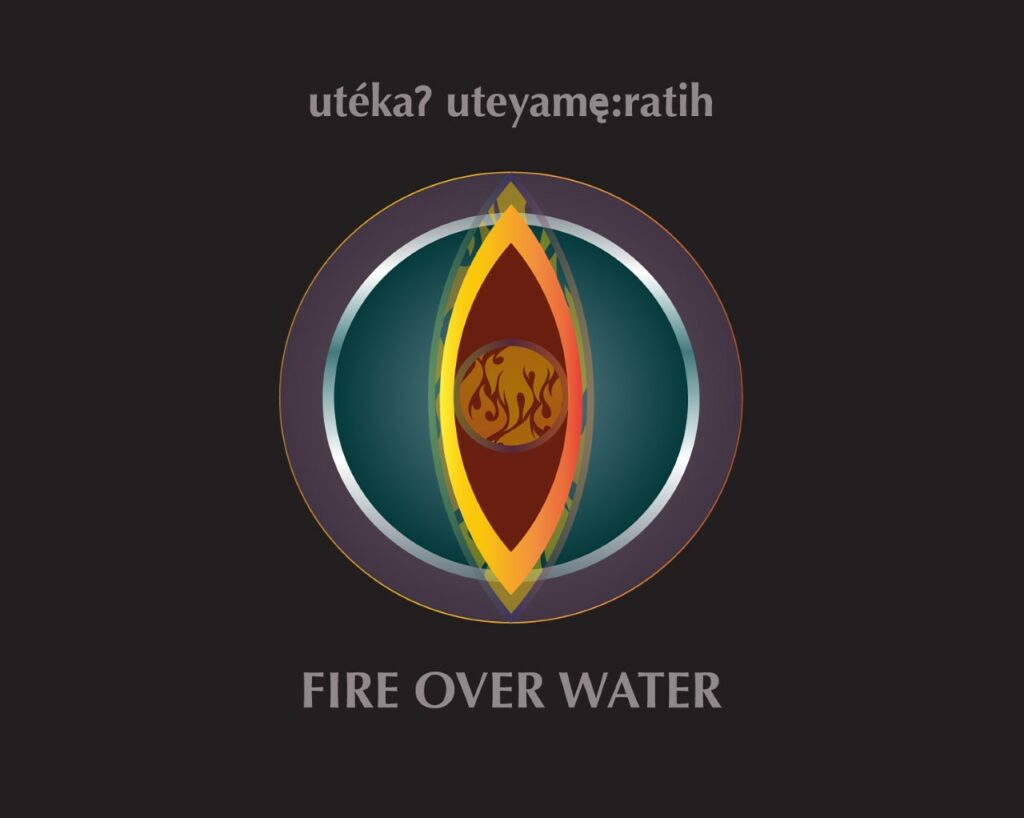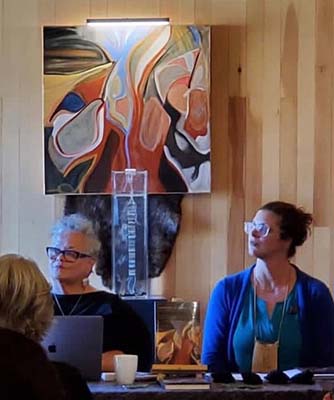
Key participants at a recent book launch and art exhibit at the Crawford Lake Conservation Area have strong connections to York University.

The Crawford Lake Conservation Area, located north of Milton, Ontario, harbours a reconstructed ancestral Wendat/Atawandaron village with three longhouses, Three Sisters farm fields, and displays and interpretative signs, all of which are very popular with visitors from across the Toronto region and beyond.
Just south of York University’s Keele Campus, a similar and even larger ancestral Wendat/Wyandot village with farm fields exists but it is not as well known. This is because it is buried in the soil and invisible to the eye. It is, however, no less important. In both places, the ancestral spirits of the Wendat/Wyandot people are present and they still speak to their descendants.
The book launched at the event, The Daughters of Aataentsic: Life Stories from Seven Generations (2021) is written by Kathryn Magee Labelle, a former postdoctoral Fellow in history at York University, who is now a professor of history at the University of Saskatchewan, in collaboration with an advisory Council of women from across the Wendat/Wyandot(te) diaspora, including Wendake, Quebec; Anderdon, Michigan (and historically Ontario); Wyandotte, Oklahoma; and Kansas City, Kansas. The book is a celebration of seven generations of remarkable Wendat women whose Motherwork has helped sustain their communities since the 17th century.
One of the members of the advisory council, Taǫmęˀšreˀ/Catherine Tàmmaro, seated Spotted Turtle Clan utrihǫt (FaithKeeper) and member of the Wyandot of Anderdon Nation; Wendat Confederacy, complemented the event with an art exhibit, Fire Over Water. The exhibit consists of paintings, videos and multi-media works. Her painting and the “head painting” in the installation, Huronia: SkyWorld View also adorns the cover of the book. The installation provides reflections on changes in politics, spirituality and the overall consequences of colonial attacks to subvert and erase the Wendat/Wyandot people. Floating in the air over the exhibit in the Deer Clan Long House is a 60-year-old red canoe, made by the Bastien family in Wendake, that represents their journey over the millennia and into spirit realms. In a video display, the canoe rests in Crawford Lake with a fire burning inside it, inspiring the name Fire Over Water.

Tàmmaro recently conducted a workshop in conjunction with Black Creek at the Skennen’kó:wa Gamig, the House of Great Peace, at the University’s Keele Campus, symbolically connecting the two ancestral villages. She has also contributed a chapter to a recent book, Sacred Civics: Building Seven Generation Cities (2022) co-edited by York Environmental Studies PhD graduate Tanya Chung-Tiam-Fook who was also present at the event. Tàmmaro is the Evergreen Brickworks Elder in Residence and serves many organizations as such, and also works as an artist in the city on multiple projects.

Labelle’s research follows important work on the Huron-Wendat by many other York scholars, including Geography Professor Emeritus Conrad Heidenreich; Carleton University Geography Adjunct Research Professor and York University alumnus Victor Konrad; and Wendat linguist John Steckley (BA ’73). Labelle’s postdoctoral supervisor History Professor Carolyn Podruchny has supervised two additional York history PhD dissertations on Wendat history: Huron College history Professor Thomas Peace’s “Two Conquests: Aboriginal Experiences of the Fall of New France and Acadia (2011)” and Victoria Jackson’s “Children and Childhood in Wendat Society, 1600-1700 (2021).” They were all present at the event to honour Labelle and Tàmmaro.
Faculty of Environmental and Urban Change Professor L. Anders Sandberg and fourth-year student Baillie Wiederick also travelled to the book launch. Sandberg has collaborated with Huron-Wendat research director Louis Lesage on a history of the ancestral village near York University. “I am so impressed with the amount of research done at York University on the Wendat/Wyandot community and the presence of an ancestral village so close to us. I am hoping that one day these situations can be brought together more closely,” said Sandberg.
The launch was expertly planned and executed by Conservation Halton and its staff led by Education Manager Brenna Bartley.
